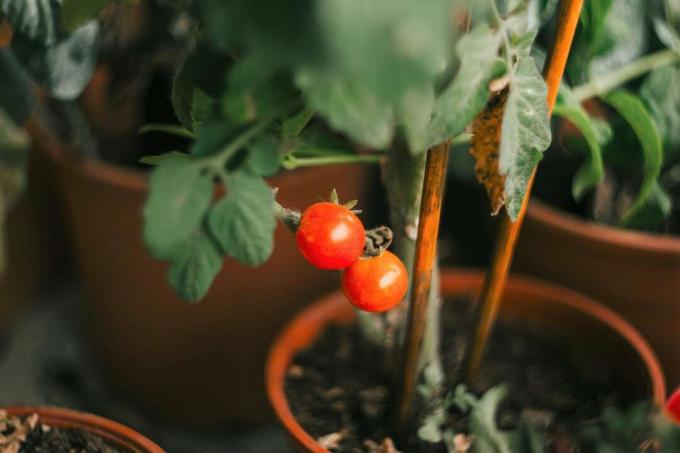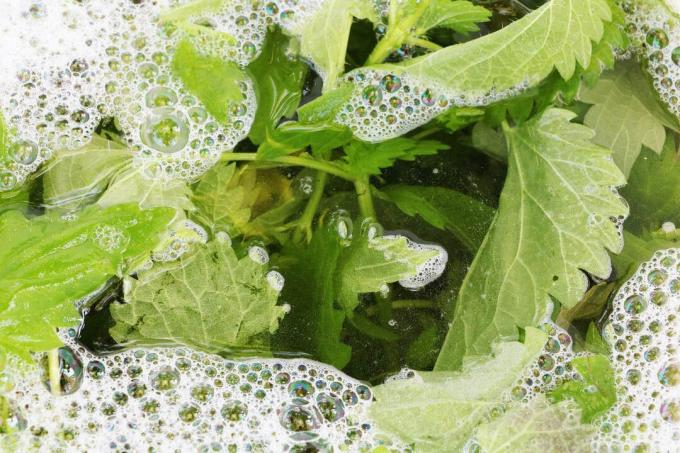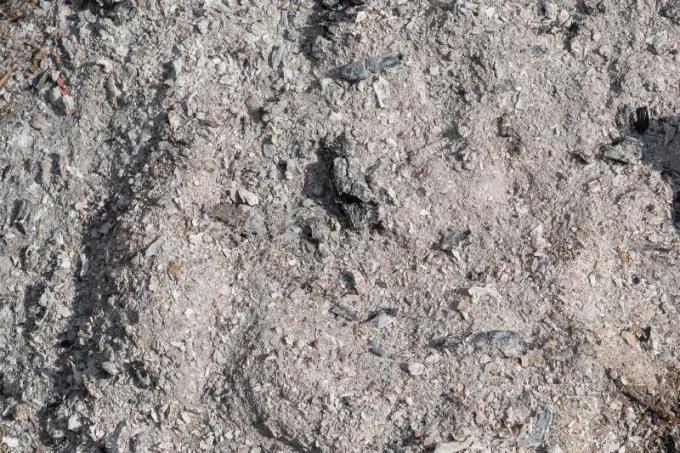
Late blight is one of the most common and feared diseases of tomatoes. It attacks entire plants and the fruits. Is it better to change the soil if the tomatoes are suffering from brown rot?
In a nutshell
- Fungal spores (Phytophthora infestans) are in the soil
- transmitted to plants by rain and watering
- Soil replacement only partially useful
- instead treat with plant manure, calcium cyanamide or wood ash
- Avoid care mistakes to prevent brown rot
Table of Contents
- Floor replacement not a must
- Treat instead of replacing
- With vegetable manure
- With calcium cyanamide
- With wood ash
- Prevent brown rot
- frequently asked Questions
Floor replacement not a must
You can usually do without a complete replacement of the tomato soil after an infection with brown rot, especially since that is in the bed or Glasshouse would be extremely costly. For new plantings, it is usually sufficient to apply a layer of fresh substrate and then mulch it. However, if you keep them in buckets, a complete soil replacement can make sense.

- To do this, remove the plant and soil from the pot
- Discard the plant, clean the pot thoroughly
- Then fill it completely with fresh soil
- or with one-third old soil and two-thirds mature compost
- remove all infected plant parts from old soil
Tip: The old soil does not have to be disposed of. It can be used on other crops not affected or threatened by brown rot.
Treat instead of replacing
Phytophthora infestans overwinters in the soil and on remaining plant debris. A rainy spring promotes rapid spread of the fungus, which becomes active at just a few degrees above zero. As a result, treating the soil may make more sense than replacing the soil in tomatoes infected with brown rot, although opinions differ on this. This can all happen in different ways.
With vegetable manure
- Remove plants after harvest
- do not leave plant residues in the soil
- repeated application of onion or nettle manure
- 1 kg of onions or fresh nettles to 10 liters of water
- Chop the onions before you start
- Leave to rest for 10 to 14 days, stirring daily

With calcium cyanamide
If a brown rot infestation was present or suspected, the soil can be cleaned in the following spring or autumn. Treat with calcium cyanamide before replanting. Calcium cyanamide is available as granules. It has disinfecting properties that can be used to combat the brown rot pathogen.
- dig up the area in question in early spring
- Remove all weeds and plant debris
- Apply calcium cyanamide to moist soil at least two weeks before planting
- keep moist afterwards
- do not spread on newly planted crops or neighboring crops
- Danger of burns
- Dosage according to the manufacturer's instructions
Tip: Calcium cyanamide can also be used on potted plants, the soil then does not have to be replaced. It is distributed on the substrate and washed in well.
With wood ash
Wood ash can be another useful tool to minimize the risk of late blight infestation on tomatoes. Simply put some ash in the planting hole and mix it with soil. Conventional chalk is said to have a similar effect. Wood ash also has the benefit of being a valuable fertilizer for these nightshades, provided you don't overdo it.

Prevent brown rot
Late blight can hardly be prevented completely. Nevertheless, there are ways and means of counteracting an infection or at least preventing its spread. You should know that the fungus gets to the plant via spray water from the ground and that the lowest leaves are usually close to the ground. That's where you can start.
- early plant strengtheners such field horsetail deploy
- Mulch soil to protect leaves from spray
- remove the bottom two pairs of leaves
- regular side shoots exhaust
- don't plant too densely
- always water from below, not onto the leaves
- Cover plants as much as possible
- alternatively cover with foil
- Do not plant tomatoes next to potatoes

Tip: When buying tomato plants, you should look for particularly robust or Pay attention to resistant varieties, because there are currently no completely resistant ones. These include, for example, 'Harzfeuer', 'Phantasia', 'Philovita', 'Primabella' and the variety 'Matina'.
frequently asked Questions
The most obvious feature are brownish spots on the leaves, stems and fruits. Later the leaves turn black, wither and die. The tomatoes themselves will harden and rot. They are no longer edible.
As already mentioned, the fungal spores reach the plants through spray water from the ground and infect them. Additional spread is caused by the wind and manual care work on the tomatoes.
It is advisable to clean them thoroughly in the spring before using them again. This is done by pouring boiling or hot water over it. Cords used as climbing aids should be renewed. If brown rot appeared in the greenhouse, then after removing the tomato plants, it is advisable to also clean the walls in the house.
A health hazard, in particular due to the poison cyanamide it contains, only exists if it is handled incorrectly. If it comes into contact with mucous membranes or moist skin, it has a corrosive effect. Wearing gloves goes without saying. You shouldn't inhale it either.
